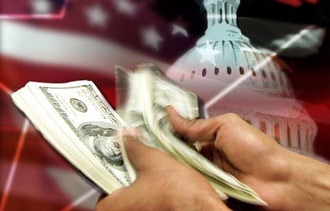By Peter Roff • USNews
Serious people are starting to wonder if tax reform can pass, largely because they’re only talking to people inside Washington.
Instead they should talk to the American people. Most of them are hungry for it. A quarter of small business owners surveyed by CNBC/Survey Money said taxes were the most critical issue they currently face. Overall it’s their No. 1 concern and, since small business is the engine of growth in the U.S. economy, that’s an important consideration.
Things have improved since Election Day 2016, but the economy is still not growing like it needs to if we are to have hope of ever paying down the national debt, now equal to about one year’s U.S. GDP.
The code is complex, cumbersome and punishes success. It incentivizes employers to send jobs overseas and keep profits off shore for as long as possible lest they be taxed twice, once when earned and again when they’re brought home. Purchasing power is shrinking even as the economy is adding jobs.
The economy is in a prolonged stall. The post-Great Recession of 2008 recovery is hardly worthy of the name. What’s needed to get things moving is a shot of economic adrenaline. The Trump plan, the centerpiece of which sets the corporate rate at 20 percent – a considerable reduction from what is currently the highest in the industrialized world – should do the trick.
Tax cuts fueled the economic booms of the roaring 20s, the soaring 60s and the Go-Go 80s. We need them again to get out of our current rut. Which means President Donald Trump needs to go over the heads of the Washington swamp-dwellers directly to the American people, just like Ronald Reagan did in 1981 to get his tax cut through.
Members of Congress, especially those in the Senate, need the kind of pressure only the public can provide if they are to pass a budget the allows for tax reform to pass with the minimum number of votes possible. If the Democrats under the thumb of Senate Minority Leader Chuck Schumer are allowed to set the threshold for passage at 60 votes, then it’s game over.
Passing the budget, though, is only the first step. There’s a lot of work yet to be done before we reform the code in ways that will make a meaningful difference in the lives and bank accounts of the American people.
Trump is off to a good start. He’s taken the show on the road and is campaigning for tax reform in states he carried for president where a Democrat is seeking re-election next year to the U.S. Senate. His trip Wednesday to Pennsylvania, where he talked with small manufacturers and workers whom he hopes will relay his concerns along with their own to Sen. Bob Casey, another Democrat up for re-election in 2018, suggests he understands the battle for tax reform will be won out in America, not inside the Beltway.
Unfortunately he’s not getting the support he needs from the echo chamber to reinforce his message. Some groups are up on the air or out in social media trying to influence voters with messages explaining how his plan will improve things for the middle class, but the messaging machine that calls those assertions nonsense is louder, more vigorous and, all too often, masquerades as news reporting.
To win on tax reform, supporters have to show Jane and John Q. Public just what it means for them. A study released in August 2017 by Marquette University economist Andrew Hanson and the Cato Institute’s Ike Brannon examining the relationship between corporate tax rates and labor costs found that rate corporate reductions in the 10- to 20-percent range “would imply long run employment gains between 6 percent to 22 percent and wage increases between 15 percent to 28 percent.”
As the president might say, those changes are “big league.”
To be successful, it is critical the president do the hard work to successfully inform regular people about the benefits of tax reform, not just for the larger economy, but for people like them as identified in the Hanson/Brannon study. Moreover every part of the coalition that backs tax reform needs to repeat them, again and again and again until the evidence overcomes the emotional impact of the assert made by Democrats like Schumer that what Trump is proposing is just another round of tax cuts for the rich.
Pressure needs to be applied, not from leaders in the fight for tax reform against members of Congress who are being pushed to vote the wrong way, but from the grassroots. Senators need to hear from their constituents. The president would do well to tell the American people this over and over again. He wants to drain the swamp, and those who voted for him did so fully aware of that fact. He can’t do it alone. He needs the people behind him.
If he can show successfully the benefits of tax reform for regular Americans that can be realized by setting the corporate tax rate at 20 percent, reducing the number of brackets from eight to four, with a top rate of 35 percent and a bottom rate of zero, making immediate full expensing for business a reality, abolishing the death tax and doubling the standard deduction, then he can assemble a coalition of voters who will help him push the bill through Congress.
Every Republican isn’t yet on board, as surprising as that sounds. The president needs to remember that too, when he travels and when he tweets. He needs to get both parties to “yes” on tax reform if he wants to deliver the relief U.S. businesses and workers need to grow economy and create jobs.
